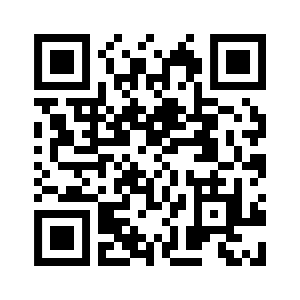
“Always pay yourself first.” This old adage embodies the practice of saving money for future use, and an Individual Retirement Account (IRA) is a great way to reach your goals.
An IRA is more than a safe place to store your wealth; it’s a place where your money can grow. Better yet, it’s a place where it can grow tax-free.
Ready to get started? Follow these three tips to open an IRA:
1. Choose The Right Account
There are two standard types of IRAs to choose from: a traditional IRA and a Roth IRA. Here’s a brief breakdown of the two retirement accounts:
Traditional IRA:
- As the defining feature of traditional IRAs, contributions are typically tax-deductible (also referred to as pre-tax, as with an employee-sponsored 401(k) plan). For example, if you made $50,000 a year and invested $5,000 into a traditional IRA, your taxable income would then be $45,000. By reducing your adjusted gross income (AGI), you might also qualify for additional tax incentives.
- Because traditional IRA contributions are tax-deductible, withdrawals (or “distributions,” as they’re formally known) will be taxed at your income tax rate when you access the funds.
- With a traditional IRA, you must make Required Minimum Distributions (RMDs) starting at age 72. In other words, Internal Revenue Service (IRS) law compels you to withdraw a small percentage of money every year.
- In most cases, withdrawals made before the age of 59 1/2 are levied a 10 percent penalty (in addition to your income tax rate). However, if you use the money to cover the first-time purchase of a home, the penalty will be waived.
- As of 2021, you can contribute a maximum of $6,000 a year to your traditional IRA (or $7,000 for those ages 50 and up).
Roth IRA:
- Whereas contributions to a traditional IRA are tax-deductible, contributions to a Roth IRA are not. Because you paid your taxes up front, funds in Roth-IRAs are considered after-tax, and your retirement withdrawals can be made entirely tax-free.
- Unlike traditional accounts, Roth IRAs do not require distributions at any point.
- As long as your withdrawals are equivalent to your contributions, you can take money out of your Roth IRA before the age of 59 1/2 — without any taxes or penalties. And unlike the limitations of a traditional IRA, you can do so for any reason you like.
- If you want to withdraw more than you’ve contributed (and tap into your investment earnings), you will not be assessed any withdrawal penalty so long as you meet the following criteria:
- You’ve had the account for at least five years
- You have a permanent disability
- You apply the money to a first-time home purchase
- As with traditional IRAs, you can contribute a maximum of $6,000 a year to your Roth IRA (or $7,000 for those ages 50 and up).
While there are many nuances separating traditional and Roth IRAs, this is the key difference between the two accounts: traditional IRAs provide immediate tax benefits, while Roth IRAs offer tax-free withdrawals in the future.
Because traditional IRAs offer upfront tax breaks, they may be more appealing for investors who expect to be in a lower tax bracket by retirement. Conversely, individuals who expect to be in a higher retirement tax bracket may benefit from choosing a Roth IRA and paying their taxes now.
2. Where to Open Your Account
Opening an IRA is easy and can be done both in person or online at any bank, credit union, or financial institution. Here are some of the leading IRA account providers on the market (all available online and with no trade fees or account minimums):
Wherever you choose to open your account, you’ll simply need to provide basic information like your full name, photo ID, address, and your Social Security Number (SSN). If you don’t have a SSN, you can also use your Individual Taxpayer Identification Number (ITIN).
Note: you do not have to be a U.S. citizen to open an IRA.
Once you choose your provider (and the type of IRA you’d like to open), you’ll then need to transfer funds from your current savings or checking account. Remember: the maximum that can be contributed is $6,000 (or $7,000 if you’re 50 and older). To complete the transfer, make sure you have your bank’s account and routing number on hand.
If you would rather fund your account through a 401(k) rollover, you’ll be asked to provide the following information:
- Your company’s name
- Your company’s address
- Your current 401(k) manager
Keep in mind that your 401(k) rollover is excluded from your IRA contribution limits, so you can still contribute to your IRA.
3. Investing Your Assets
When you open your IRA, you’ll be able to choose how involved you’d like to be.
If you’re new to investing and prefer the “hands off” approach, you’ll be able to select from a variety of mutual funds and exchange-traded funds (ETFs). These offerings provide pre-mixed asset allocation portfolios, so you won’t have to select and monitor each and every investment. Once you make your investments, you can “set it and forget it.”
If you prefer to be more “hands on,” however, you’ll have plenty of flexibility in managing your IRA. You’ll just need to more consistently research, monitor, and rebalance your portfolio (or hire a financial advisor to do that for you).
Some providers, like Fidelity, offer “model portfolios” that you can follow as you invest on your own. Click here to learn more.
Getting Started
By capitalizing on the power of compounding interest, you’ve taken a crucial step to preparing for retirement.
In the words of Albert Einstein, “Compound interest is the eighth wonder of the world. He who understands it, earns it. He who doesn’t, pays it.” Over time, you will reap the rewards of your investments.
But the rewards don’t just have to stop there. At uLink, we’re dedicated to rewarding our customers every step of the way while they support their loved ones back in their home countries. Like our new customer offer, where you receive gift cards to major retailers worth $30 on your first 5 transfers alone. Send money, pay bills, or reload phones with the peace of mind that more of your money makes it back to the ones you love.
Miles from home — just moments away with uLink.









